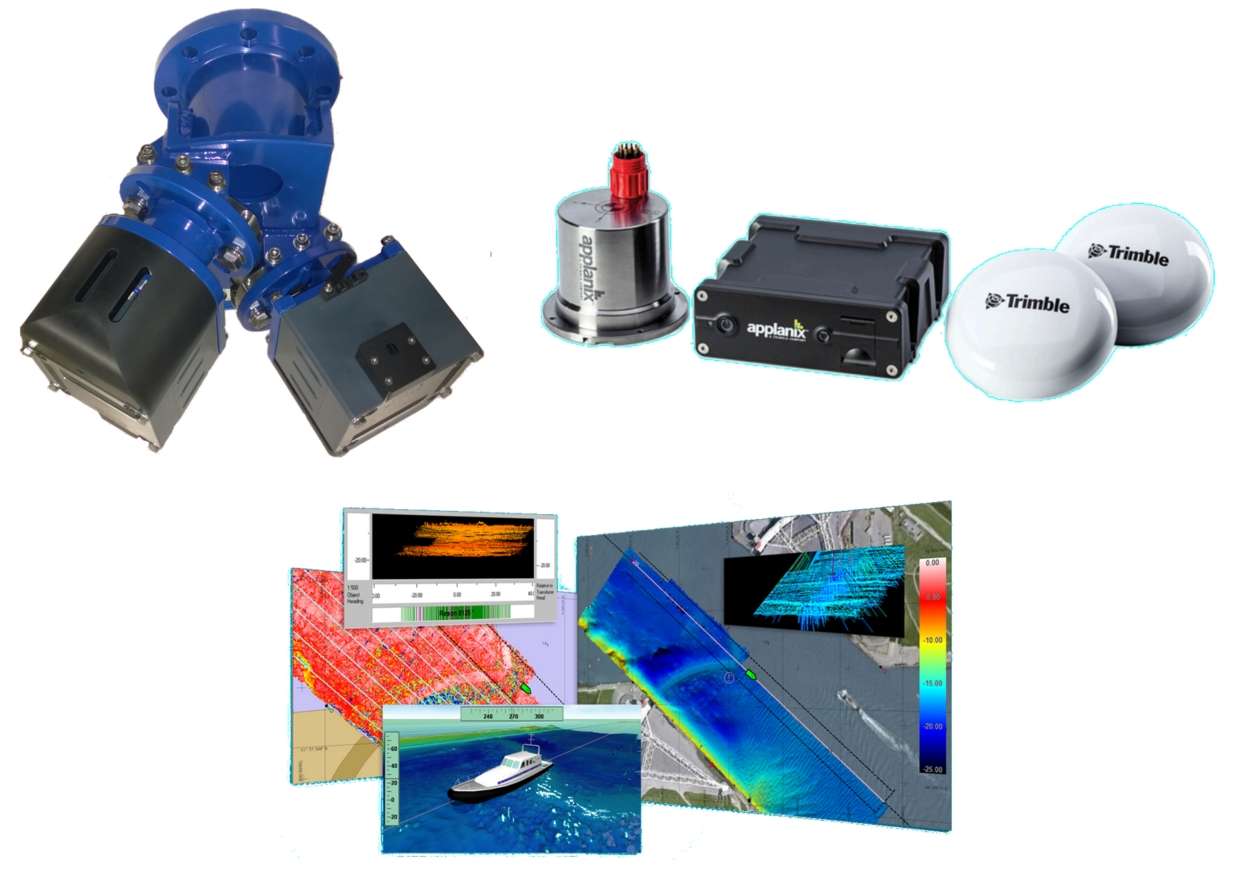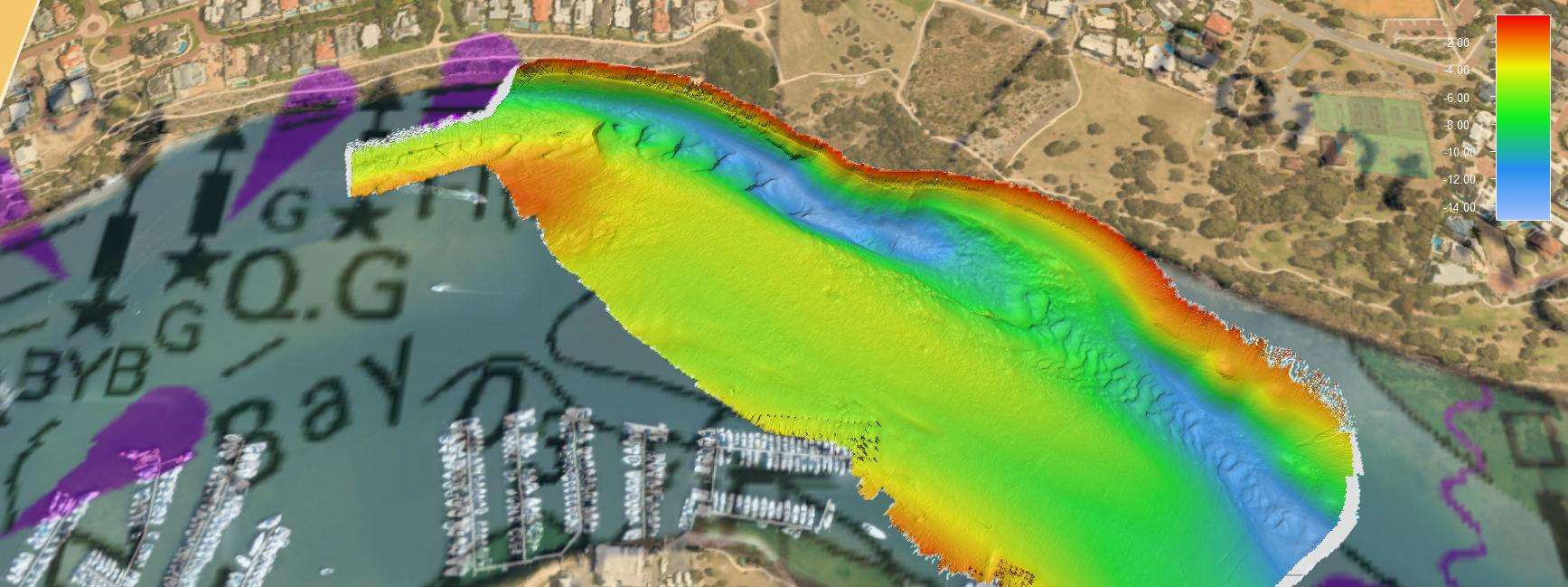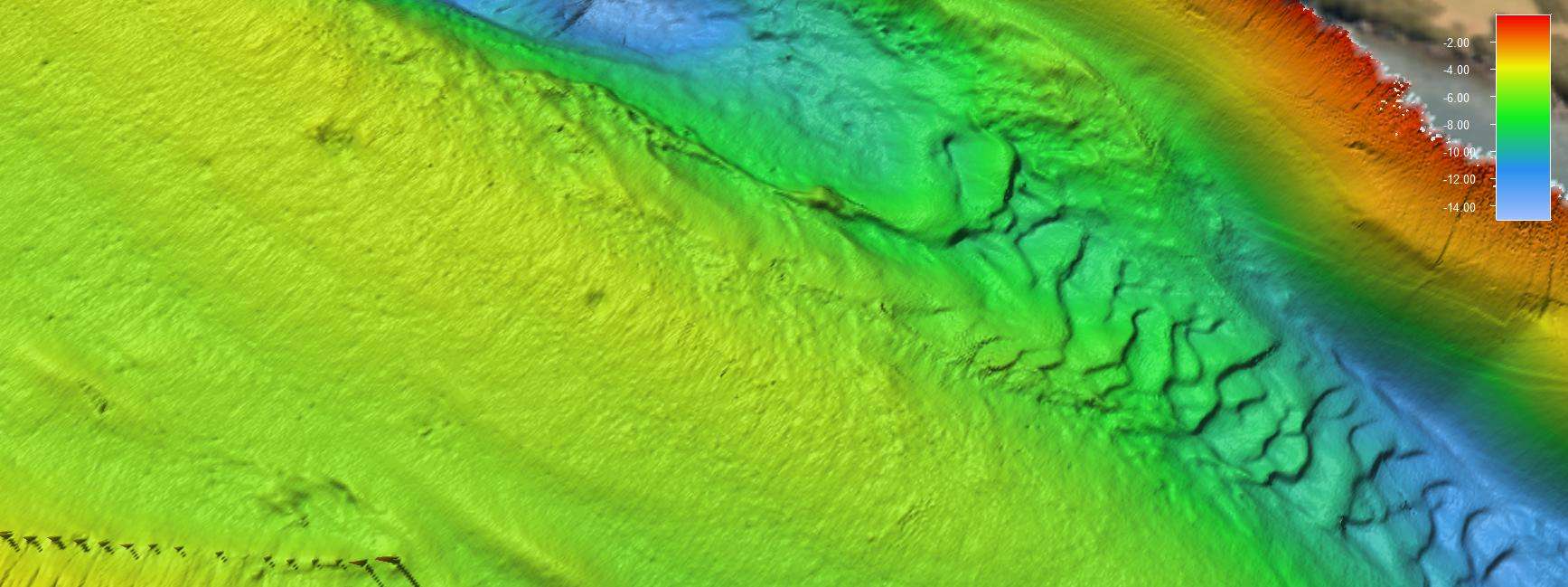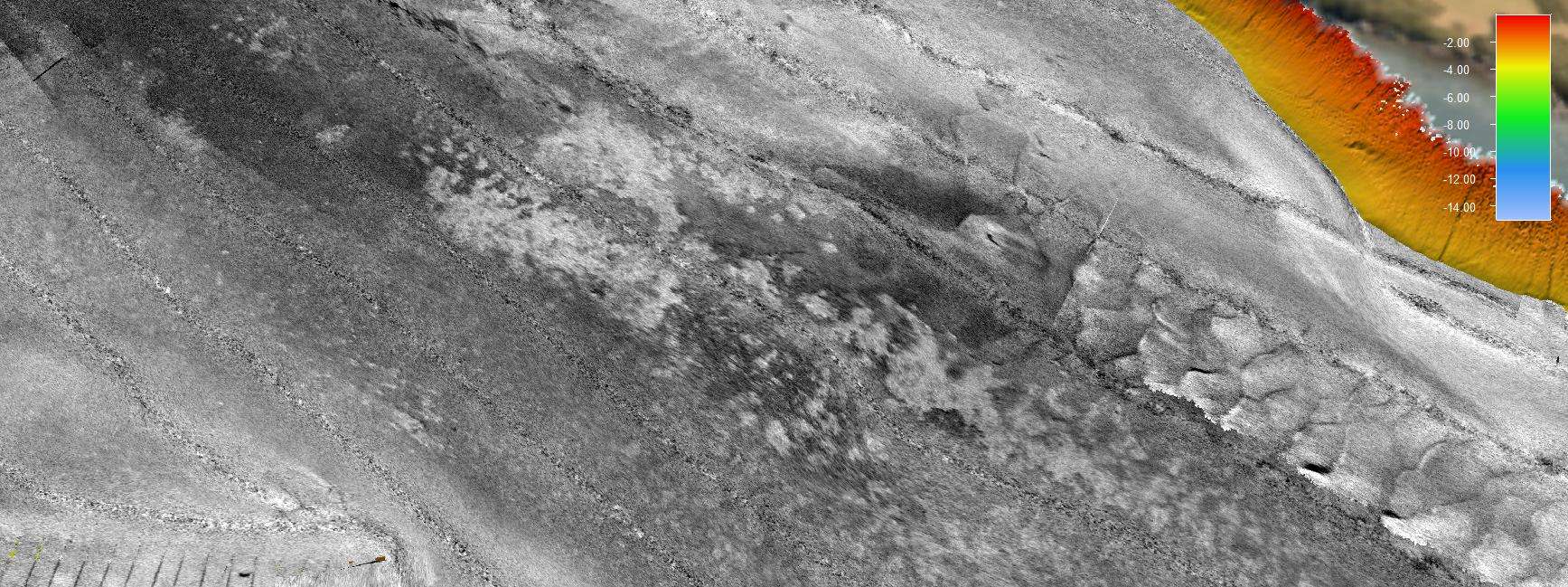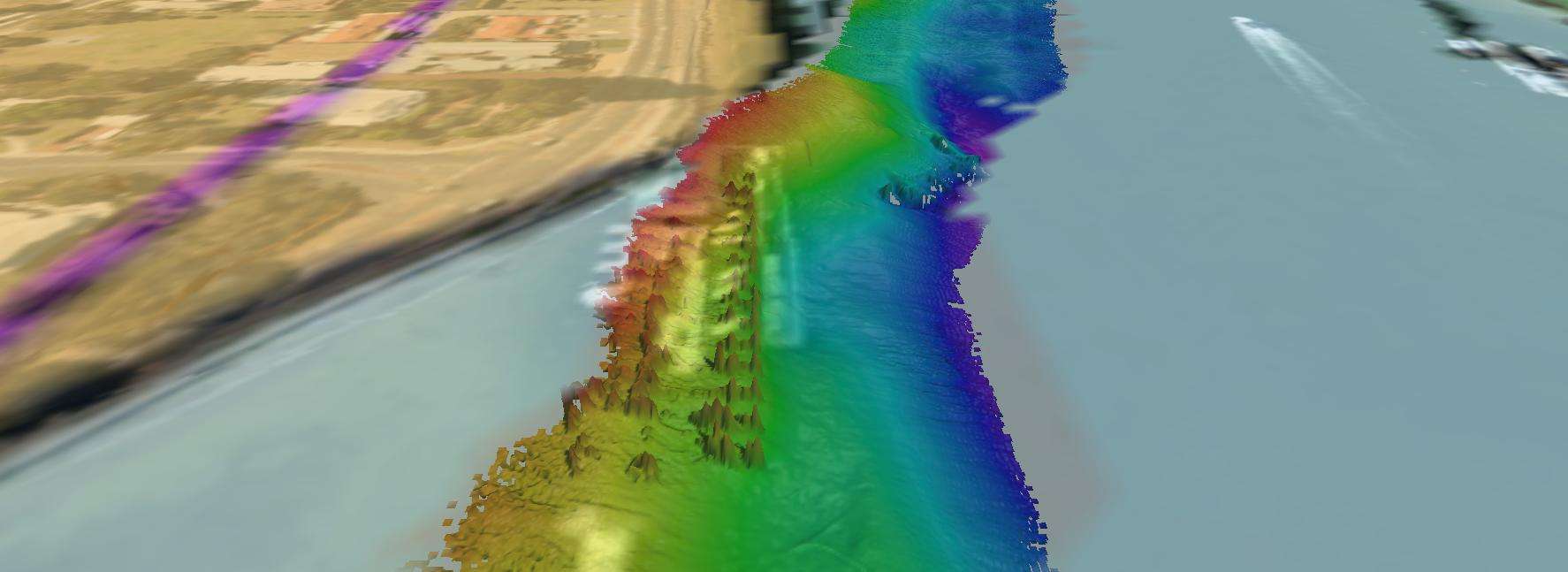Acoustic Imaging Wide Swath Shallow Water Multibeam Echo Sounder
In March 2014 Acoustic Imaging purchased a pair of R2Sonic 2020 multibeam echo sounder (MBES) transducers to integrate with their exising POS MV small form factor (SFF) Wavemaster and QINSy acquisition software. The objective was to assemble a portable, wide-swath MBES system suited for small boat operations in shallow water.
The R2Sonic 2020 system consists of a compact transducer (15.5cm x 14cm x 15cm) and topside Sonar Interface Module (SIM) capable of supplying bathymetry, backscatter, and water column data. The system features a 2° beam width, low power consumption (20W), and 200° swath width in the dual-head configuration capable of producing USABLE bathymetry and backscatter data to at least 8X water depth.
The Applanix POS MV WM Ti IP68 SFF is the premium shallow water positioning and orientation solution on the market, and is the defacto standard for any hydrographic survey. The titanium housing on the inertial motion unit allows direct mounting on the MBES transducer pole or on the vessel. Maximum power consumption is 35W and all components can be easily installed on the smallest of vessels.
The QPS QINSy product is used for data logging and real-time QC, while data processing, cleaning, and interpretation is conducted with QPS Fledermaus. The integrated workflow established between these two packages results in efficient and accurate bathymetry, backscatter, and water column data products.
System trials were conducted with the Department of Transport WA both outside of Fremantle harbour and in the Swan River. The real-time MBES data were reprocessed using a PPK solution derived from Applanix POSPac MMS software to provide a seamless alignment of adjacent swaths. An acquisition to processing ratio (to the cleaned sounding level) of 1:1 was achieved, and we anticipate this could be improved during normal survey operations (i.e., less testing of settings). A backscatter mosaic was also produced from the data using the QPS FMGT application; further tests are ongoing with the system to determine the suitability of this data for automated seabed characterisation.
Some of the key advantages already confirmed with the Wide-Swath Shallow-Water (WSSW) MBES system include:
- ability to map large areas of shallow water regions in minimal time;
- sector rotation of the MBES swath allows shore lines / river banks to be mapped at a safe distance;
- capability to be mounted on small vessels of opportunity;
- low power consumption of all components allows system to be run off a generator as small as 1kVA.
Immediately after the system trials the Acoustic Imaging WSSW MBES system was used by McMullen Nolan on a shallow water survey project off Busselton with excellent results. Further tests of the system will be conducted with the Port of Brisbane in the forthcoming months.


